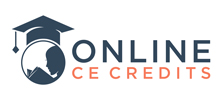Description
This is a fast paced, highly practical training designed to teach innovative approaches and ideas to achieve successful outcomes with clients who:
- Are challenging
- Court-referred
- Unmotivated
- Give you “Yes, but…” or “I don’t know” responses
- Are involuntary
- Who blame others
- Who resist taking responsibility for creating change
- Change their focus
Such clients provide a unique challenge to professionals attempting to provide quality services to both the client and referral source. You will learn what to do in order to prevent, avoid, and resolve what has traditionally been deemed ‘resistance’. Numerous techniques that are applicable across a wide array of clients and problems will be presented, discussed,and illustrated through video demonstrations.
Emphasis will be on ‘how to’ aspects of maximizing the potential for client movement towards goals and positive life changes. Techniques presented can be integrated with all theoretical approaches Specifically, difficulties in managing challenging clients will be approached as a phenomenon of the dialogue and interaction between the practitioner and the client. Techniques will be offered to create impactful client-practitioner dialogue through the meticulous use of language and other skills in the moment-to-moment interactions. Those trained in traditional Motivational Interviewing will find the techniques offered will take their skills to the next level and circumvent inherent weaknesses in the approach.
Upon completion of this training, participants will have a broad array of techniques to add to their repertoire to improve client outcomes and to aid in reducing the stress and burnout that accompanies their most frustrating client-worker interactions. Included in this training will be new, cutting-edge research on the use of priming in the therapeutic dialogue. Priming statements join with clients’ current psychological state and readies them for new perspectives and behaviors. The research on the impact of priming is exceptionally compelling yet, this powerful linguistic tool is rarely discussed with regards to its clinical implications.
Ultimately, attendees will learn what priming is, the theory behind what occurs in the brain when priming occurs, and how to incorporate priming into the dialogue with the client for improved outcomes.
Objectives:
a). Conceptualize what has historically been deemed ‘resistance’ in a manner that empowers workers to avoid, circumvent, and utilise it for client benefit.
b). Describe and understand the most common errors workers make that hinder client movement.
c). Understand and explain the inherent power of the therapeutic impact of language and employ numerous specific linguistic techniques that dissolve barriers with mandated clients.
d). Understand methods for dealing with common difficulties such as “Yes, but…” and “I don’t know” responses.
e). Explain the pitfalls of over-questioning and how to employ more effective alternative approaches.
f). Define what priming is and describe how and why it has such a significant impact on mental processing and incorporate priming principles into the therapeutic dialogue.
Target Audience:
The target audience for this event includes psychologists, licensed clinical social workers, licensed counselors, MFT’s, and other clinical mental health professionals.
Instructional Level: Intermediate
Instructor(s): Clifton Mitchell, Ph.D.
Material Author(s): Clifton Mitchell, Ph.D.
For additional information about this course, the instructors, or the material authors, please contact Content Assistance at content@onlinececredits.com.
Featured Materials :
Course materials are found in the Lesson module after a course is purchased.



